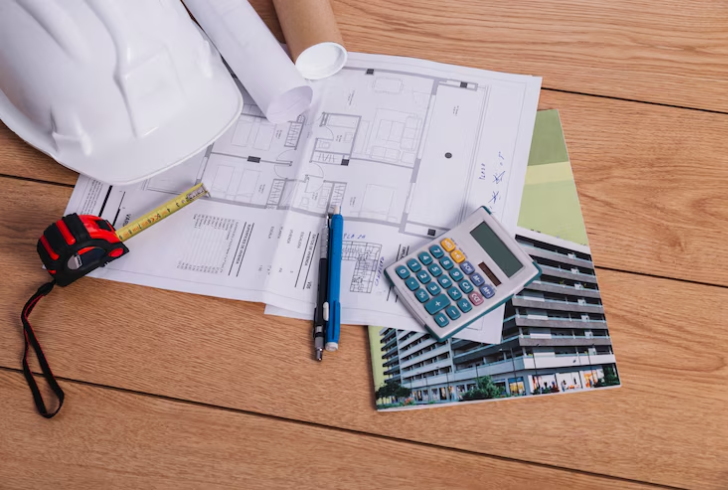Understanding the financial aspects is crucial when embarking on the journey to build a new home or renovate an existing property. One key question often arises: What is the interest rate on a construction loan?
This guide provides a comprehensive look at construction loans in 2024, exploring current rates, loan terms, down payments, and more to help streamline the process of financing your project.
What Is a Construction Loan?
A construction loan is a specialized, short-term loan designed to cover the costs associated with building a new home or renovating an existing one. Unlike traditional mortgage loans, which are used to purchase an already completed property, construction loans provide the funds necessary to finance the construction phase.
Typically, construction loans come with higher interest rates, ranging between 6% to 10% APR. The reason for these elevated rates is the increased risk for lenders: since the property is not yet built, there is no tangible collateral. Instead, the loan amount is released in stages, known as "draws," as construction progresses.
Key Features of Construction Loans
- Higher Interest Rates - Due to the risk involved, construction loans generally have higher interest rates compared to traditional mortgages.
- Short-Term Loan - These loans are intended to cover the period of construction, usually between 12 to 18 months.
- Down Payment - A typical down payment is around 20% of the total construction cost.
What Is the Interest Rate on a Construction Loan?

Freepik | Construction loans often come with higher interest rates due to the increased risk for lenders.
Construction loans are short-term loans with higher interest rates compared to traditional mortgages. These loans usually come with an annual percentage rate (APR) ranging between 6% and 10%. The higher rate is due to the increased risk for lenders since the property is not yet completed and cannot serve as collateral until construction is finished. For 2024, the average construction loan interest rate is approximately 6.750% for a 15-year term and 7.250% for a 30-year term.
How Long Does a Construction Loan Last?
Construction loans are designed to cover the duration of the building project. This period usually ranges from 12 to 18 months, depending on the complexity and scope of the construction. Once the construction is complete, the loan transitions into a traditional mortgage. During the construction phase, payments primarily cover the interest on the loan. The principal amount is used to pay contractors and suppliers based on the progress of the construction.
Down Payment Requirements for Construction Loans
For a construction loan in 2024, the average down payment required is about 20% of the total construction cost. This down payment is typically higher than that of a traditional mortgage due to the increased risk.
To determine the exact down payment:
- Get an Appraisal - Have the future home appraised to establish its projected value.
- Calculate Total Construction Costs - Obtain a detailed cost estimate from your builder.
- Subtract Loan Amount - The down payment is the difference between the construction costs and the loan amount provided.
How Payments Work on a Construction Loan
During the construction phase, borrowers make interest-only payments. The principal amount is disbursed in stages to the builder as the work progresses. These payments, known as "draws," are based on the completed work and are generally paid out at various project milestones. Monthly or quarterly payments cover only the interest accrued on the disbursed funds.
Construction Loan vs. Traditional Mortgage Loan

Freepik | partystock | Construction loans disburse funds gradually as the project progresses, not all at once.
The primary difference between a construction loan and a traditional mortgage is the way funds are disbursed. Construction loans provide funds incrementally as construction advances, rather than in a lump sum. This means:
- Variable Payments - Monthly payments during construction vary based on the amount drawn and the interest accrued.
- Final Mortgage Transition - Upon completion, the construction loan converts into a traditional mortgage, where fixed monthly payments become applicable.
Requirements for a Construction Loan
To qualify for a construction loan, lenders typically require:
1. Credit Score - A minimum score of 620 is generally needed, with higher scores (740 and above) securing better rates.
2. Debt-to-Income Ratio - A ratio lower than 45% is preferred, indicating a manageable level of debt relative to income.
3. Down Payment - A 20% down payment is standard, reflecting the high-risk nature of construction loans.
4. Detailed Project Information - Lenders need comprehensive details, including:
- Financial Records - Transparency with credit and bank records.
- Construction Contract - A signed agreement with a licensed and insured builder.
- Property Deed - Proof of ownership or purchase agreement.
- Construction Plans - Detailed designs and blueprints.
- Budget - A line-item budget for the construction project.
- Draw Schedule - An estimated schedule outlining payment milestones.
Understanding what is the interest rate on a construction loan is essential for anyone considering building or remodeling a home in 2024. By grasping the loan's specifics, including rates, payments, and requirements, the path to your new home becomes clearer and more manageable.






